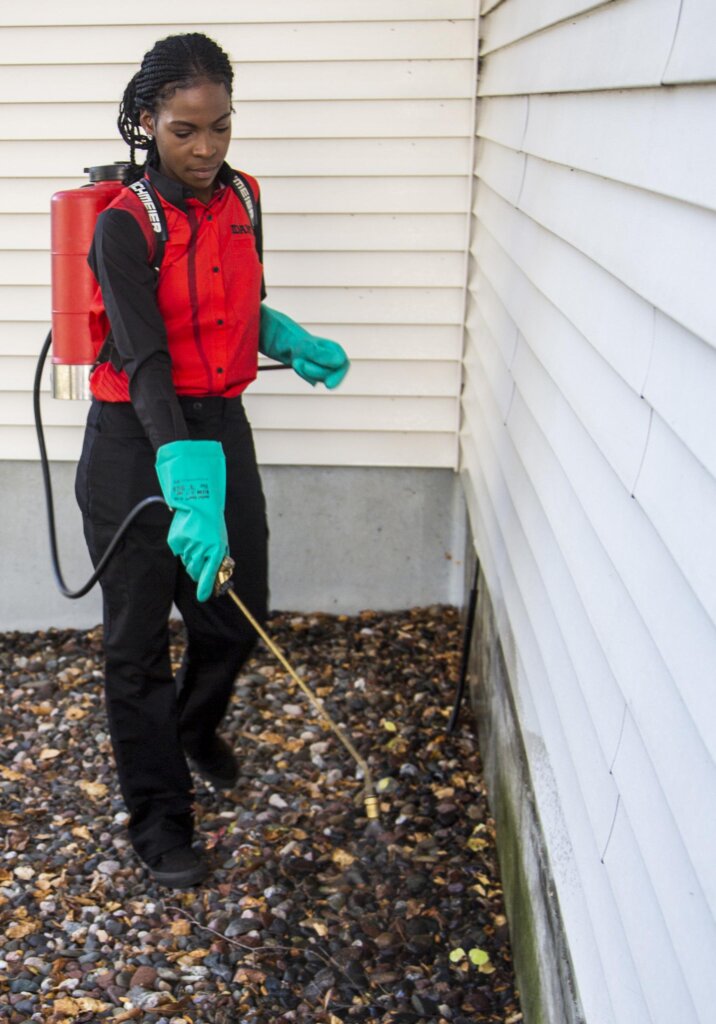A1 Charlotte Pest Control Companies - Your Regional Pest Experts
Wiki Article
Bed Insect Treatment Failure: Comparing Chemical Vs. Non-Chemical Solutions
In the realm of bug control, specifically when dealing with the relentless problem of bed insects, the choice in between chemical and non-chemical treatment remedies can be a critical one. Both techniques use unique benefits and downsides, affecting aspects such as performance, safety considerations, and total cost. By taking a look at the nuanced information of each method, a clearer understanding of which course to go after in resolving a bed bug infestation can be achieved.Performance of Chemical Treatments
Chemical treatments for bed insect invasions have actually been commonly acknowledged for their potent and quick efficiency in eliminating these bugs. When thinking about the efficiency of chemical treatments, it is important to comprehend that they can supply a quick and extensive option to a bed insect issue. Specialist pest control specialists usually count on insecticides to target bed bugs at various phases of their life cycle, consisting of eggs, nymphs, and grownups. These chemicals usually work by interfering with the bed insects' nerves, resulting in paralysis and eventual fatality.Furthermore, chemical therapies have the advantage of providing recurring impacts, meaning that they can remain to get rid of bed pests even after the initial application. This residual activity is especially useful in combating any possible re-infestations. In addition, the quick action of chemical therapies can bring relief to people encountering extreme bed pest infestations, enabling them to gain back control of their living spaces swiftly.
Safety Worries With Chemical Solutions
One critical element that needs careful consideration when making use of chemical solutions for bed pest treatment is making sure the safety and security of owners and the setting. Direct exposure to certain chemicals utilized in bed pest treatments can lead to breathing problems, skin irritation, or other negative responses, especially in people with pre-existing conditions or level of sensitivities.Additionally, the ecological impact of chemical services is an additional considerable consideration. Some pesticides used in bed insect treatments may be hazardous to beneficial insects, wild animals, and communities if they seep into the soil or water systems. It is crucial to use chemical treatments sensibly, adhering to safety and security guidelines, and thinking about less toxic alternatives to minimize these dangers and make certain the effective and risk-free management of bed bug problems.
Advantages of Non-Chemical Approaches
Considering the prospective safety and security worries and environmental influence associated with chemical remedies for bed bug treatment, checking office pest control service out non-chemical approaches provides a promising option with numerous unique advantages. Non-chemical treatments are eco friendly, as they do not contribute to air or water contamination, making them a lasting selection for insect control.Furthermore, non-chemical solutions can be efficient in targeting bed pests, consisting of hard-to-reach locations where chemical therapies may not permeate - A1 charlotte pest control companies. Approaches such as warm therapy, vacuuming, vapor cleaning, and bed mattress encasements give extensive eradication without the use of damaging chemicals.
Limitations of Non-Chemical Treatments

In addition, non-chemical therapies commonly call for multiple applications to attain successful elimination. This can be time-consuming and might not always guarantee total removal of all bed pests and their eggs, especially in concealed or hard-to-reach areas.
In addition, the success of non-chemical treatments heavily depends on correct execution and thoroughness, which can be testing for people without specialist expertise. Insufficient application of non-chemical approaches might lead to incomplete removal, causing relentless invasions and the requirement for added treatments.
Therefore, while non-chemical treatments have their advantages, it is necessary to acknowledge these limitations and consider them when identifying the most reliable method for handling bed insect invasions.
Expense Contrast: Chemical Vs. Non-Chemical Options
Provided the restrictions linked with non-chemical treatments, a vital element to evaluate in the context of bed insect monitoring is the expense contrast between chemical and non-chemical options. In comparison, non-chemical treatments like warm therapy or heavy steam can be much more termite care pricey, with costs ranging from $1,000 to $6,000 for a whole home. While the initial cost of chemical treatments might appear lower, numerous therapies might be required to completely get rid of the problem, potentially boosting the total price.Final Thought

Taking into consideration the prospective safety and security concerns and ecological influence associated with chemical solutions for bed bug therapy, discovering non-chemical approaches offers an encouraging alternative with numerous distinctive benefits.Offered the constraints connected with non-chemical therapies, an important facet to evaluate in the context of bed bug monitoring is the cost comparison between chemical and non-chemical choices. In contrast, non-chemical treatments like warm therapy or heavy steam can be a lot more pricey, with expenses varying from $1,000 to $6,000 for a whole home. While the first cost of chemical treatments may appear lower, several therapies may be called for to fully eliminate the infestation, potentially raising the total price.In conclusion, when comparing chemical and non-chemical bed bug treatment choices, it is essential to take into consideration effectiveness, safety, advantages, restrictions, and price.
Report this wiki page